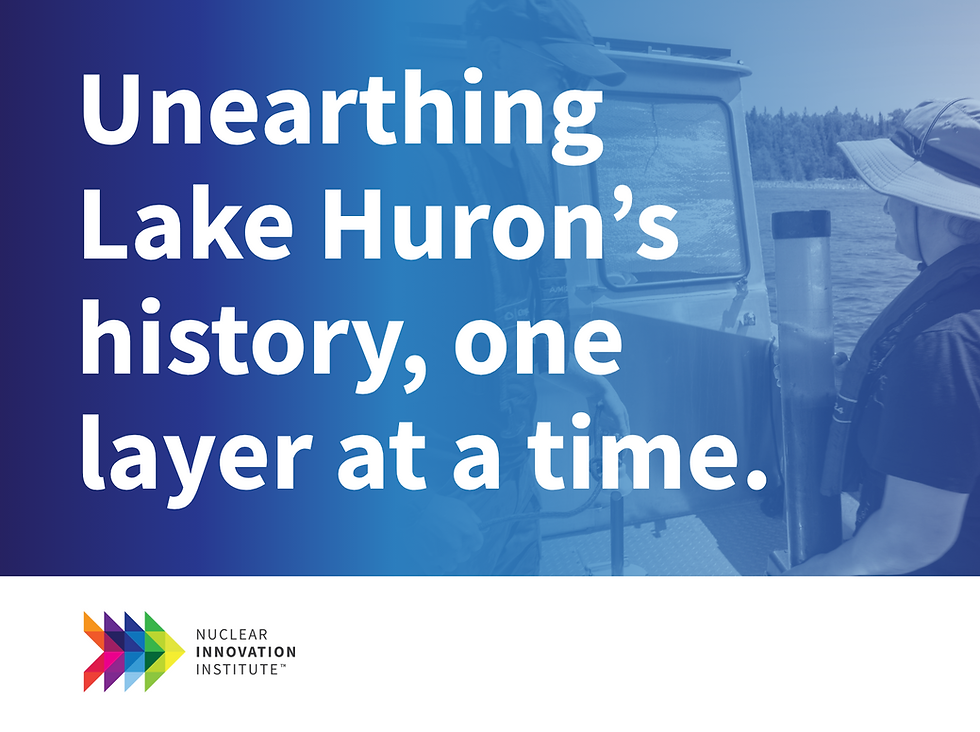A nuclear advocacy starter kit: the perfect Valentine’s Day gift
- Susie Ho

- Feb 12, 2021
- 4 min read
Updated: Jan 10, 2022
Are you celebrating Valentine’s this weekend with that special someone? Are you still looking for that perfect gift?

Why not give them the gift of knowledge with a (free!) Advocacy Starter Kit, brought to you by the North American Young Generation in Nuclear (NAYGN)? Your special someone will be the life of the (virtual) party as they relay facts and data from reputable sources to convey the importance of nuclear energy in achieving net zero.
In all seriousness, though—for those of you unfamiliar with NAYGN, they are a non-profit organization dedicated to providing opportunities and leadership training to its members, informing and engaging the public on nuclear science and technology, and inspiring today’s nuclear professionals to meet the challenges of the 21st century.
Though their focus is on the young generation, their membership base spans all ages. The Advocacy Starter Kit—a free downloadable resource—is just one of the tools that they use to help spread the message to the community.
I spoke with Matthew Mairinger, COO of NAYGN, to learn more about him and his thoughts on advocacy, the important role that young people play in the future of the nuclear industry, and what we can do to be better advocates. Here’s our conversation:
SH: Why is advocacy in the nuclear industry so important?
MM: It’s so important because if we want nuclear to be part of the long-term solution, if we want to make a difference, we have to start influencing change.
Hollywood will come out with the Chernobyl mini-series, movies like the China Syndrome, shows like The Simpsons—and if that’s all the public is seeing, that’s their perception on nuclear.
Combine that with anti-nuclear groups spreading false information and fear mongering. We need to change that perception. We need to reach out, work with politicians, work with the public, and tell them the benefits of nuclear.
“If we don’t share our story with the public, where else are they going to hear it from?”
SH: So true. Like if members of the public see only this sensational side of the conversation, there’s no way they’ll take a stand when pressure comes to close down existing nuclear plants.
MM: And this is something we’ve definitely seen—we’ve seen the fleet in Germany close, Diablo Canyon in California, Indian Point in New York. When the public isn’t supportive, they’re going to go to their politicians and say “We want to shut down nuclear”. But to try and fight it at that point, it’s usually too late.
SH: Why do you think the nuclear industry struggles with advocating effectively?
MM: I think there are several reasons: first, the industry is cautious and conservative, which is a good thing when we’re operating our plants, but not how we should operate our advocacy efforts.
I also think it’s because the industry is not effectively reaching out to the ‘next generation’. For example, besides IsoDope, what other nuclear content is there on TikTok? So we have this huge social media channel and there’s not a lot of engagement at that level.
And finally, the industry likes to surround itself with like-minded entities—nuclear advocates talking to nuclear advocates—and we’re not reaching out to the clean energy groups, the renewables groups, and taking part in their events and conferences.
SH: What can the industry do to improve their advocacy efforts?
MM: I think we really need to shift gears and take on more risks with advocacy efforts—providing assistance when there are rallies such as Stand Up for Nuclear, for example, where nuclear advocates take to the streets and engage with the public.
We should also encourage more employees to participate in school visits and career days, support existing efforts to do non-traditional advocacy through use of social media and influencers. Perhaps even collaborating on a ‘big project’ like a Netflix series or documentary—on something like medical isotopes, SMRs, fusion.
Finally, we also need to have a bigger presence at the big climate conferences. I was at the United Nations’ climate conference COP25 and could count the number of nuclear advocates on both hands. There are 31,000 people at COP, these are world energy leaders, but altogether there were around 10 of us advocating for nuclear.
SH: What role will young people play in determining the future of nuclear?
MM: This is a great time to be forward looking. If we get youth energized, get them excited, let them know, for example, that SMRs are the way of the future, that nuclear is clean, that we’re creating isotopes, and that we can actually make a difference in climate change—then they’ll be the nuclear champions of the future.
“The younger generation can either be the nuclear champions or they will be the voice of change urging politicians to end nuclear. The path is open, and it is up to us to ensure that clean reliable nuclear energy remains a key component of the energy mix."
Key takeaways:
The nuclear industry needs to take more risks in its advocacy efforts (hello, Netflix mini-series, perhaps?).
People within the industry need to do their part and be more proactive in spreading the message.
There needs to be a greater nuclear presence at non-nuclear events like climate conferences.
Teaching energy literacy at a young age is important because it helps introduce important thought topics to them before they are influenced by media biases.
Change isn’t going to happen overnight—and clearly, the nuclear industry still has a long way to go to communicate an impactful message that reaches a critical mass of people. Perhaps we can all learn from young people like Matthew and organizations like NAYGN who seem to be doing it right.
Happy Valentine’s Day.
Written by Susie Ho, former Senior Advisor at the Nuclear Innovation Institute.




